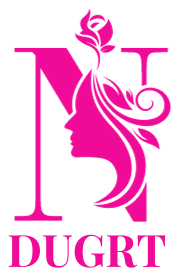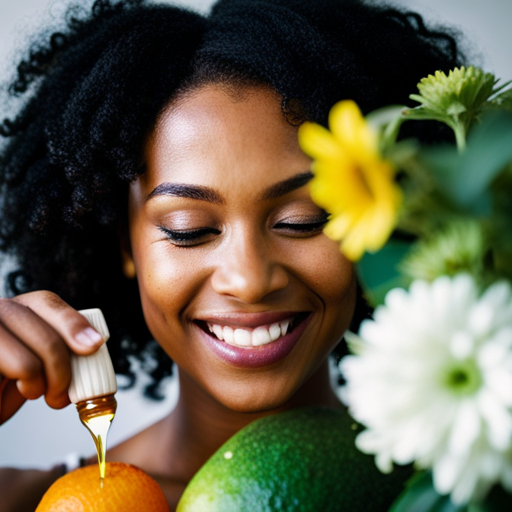Protecting Your Hair From Heat Styling Damage

Imagine your hair as delicate silk, susceptible to damage from the intense heat of styling tools. To safeguard its health and vitality, understanding the impact of heat styling is essential.
In this article, we will explore the best practices for protecting your hair from heat styling damage. From selecting the right heat protectant to incorporating heat-free styling methods, you will gain valuable insights into maintaining lustrous and resilient hair.
Understanding Heat Styling Tools
The most common heat styling tools used for hair include flat irons, curling irons, and hair dryers. Understanding heat distribution is crucial when using these tools to prevent heat damage.
Flat irons, for instance, utilize heated plates to straighten hair. It is important to ensure that the plates heat evenly to avoid hot spots that can cause damage.
Curling irons, on the other hand, rely on a barrel that heats up to form curls. Proper heat distribution along the barrel is essential to prevent overheating and subsequent hair damage.
Hair dryers, which blow hot air to dry and style hair, should also be used with caution. Opt for dryers with adjustable heat settings to control the temperature and minimize the risk of overheating the hair.
Additionally, using heat protectant products before styling can provide a barrier between the hair and the heat, reducing the likelihood of damage.
Understanding how these heat styling tools distribute heat and taking preventive measures is key to maintaining healthy, undamaged hair.
Choosing the Right Heat Protectant
To effectively shield your hair from heat damage while using heat styling tools, it is essential to choose the right heat protectant product.
When selecting a heat protectant, consider the method of application. Look for a product that can be evenly distributed on damp or dry hair to ensure full coverage. Whether it’s a spray, serum, or cream, the application should be easy and convenient for your styling routine.
Additionally, pay attention to the ingredients in the heat protectant. Opt for products containing ingredients like silicones, which form a protective barrier over the hair, or natural oils like argan oil and coconut oil, which offer nourishing and heat-protective properties. Avoid products with high alcohol content as they can be drying to the hair.
It’s also beneficial to choose a heat protectant with added benefits such as UV protection or frizz control.
Proper Heat Styling Technique
When it comes to proper heat styling technique, there are three key points to consider:
-
Using heat protection products
- Applying heat protection products before styling your hair can provide a barrier between the heat and your hair, reducing the risk of damage. These products typically contain ingredients that help to moisturize and shield the hair from the high temperatures.
-
Controlling the temperature of styling tools
- It is important to use styling tools with adjustable temperature settings. Different hair types require different levels of heat. Fine or damaged hair should be styled with lower temperatures, while thicker or coarser hair may require higher temperatures for effective styling. Adjusting the temperature to match your hair type can help prevent excessive heat damage.
-
Timing the duration of heat exposure to your hair
- Limiting the amount of time your hair is exposed to heat is crucial in preventing damage. It is recommended to avoid leaving the heat on a single section of hair for too long. Continuous movement of the styling tool along the hair shaft can help distribute the heat evenly and minimize the risk of overheating.
Understanding and implementing these points can significantly reduce the risk of heat damage and help maintain the health and integrity of your hair. By focusing on these aspects of heat styling, you can achieve the desired results while minimizing the potential for harm to your hair.
Heat Protection Products
One effective method for safeguarding your hair from heat styling damage is by using heat protection products and implementing proper heat styling techniques. Heat protectants offer numerous benefits, including forming a protective barrier that reduces moisture loss and prevents heat from directly damaging the hair cuticle. When applying a heat protectant, it is crucial to distribute the product evenly throughout the hair, focusing on the mid-lengths and ends, which are more prone to damage. Additionally, applying the product to damp hair can help in better absorption and distribution.
Proper heat styling techniques involve using the right tools at the correct temperature and avoiding excessive heat exposure. By incorporating heat protection products and practicing appropriate heat styling techniques, you can minimize the risk of heat damage to your hair.
Moving forward, let’s delve into the importance of temperature control and timing in heat styling.
Temperature Control and Timing
Implementing proper temperature control and timing is essential for minimizing heat damage during the heat styling process, ensuring the protection of your hair. By following the recommended temperature settings and styling durations, you can significantly reduce the risk of heat-related hair issues. Additionally, the application of a heat protectant is crucial in forming a barrier between your hair and the heat styling tools. This further minimizes the potential damage caused by high temperatures. Below is a table summarizing the recommended temperature settings and timing for common heat styling tools:
| Heat Styling Tool | Recommended Temperature | Maximum Styling Time |
|---|---|---|
| Flat Iron | 300-380°F | 15-20 seconds |
| Curling Iron/Wand | 320-350°F | 8-10 seconds |
| Hair Dryer | 140-160°F | 15-20 minutes |
| Hot Rollers | 250-300°F | 10-15 minutes |
Limiting Heat Exposure
When it comes to limiting heat exposure, it’s important to consider using heat protectant products before applying any heat styling tools to your hair.
Additionally, whenever possible, allow your hair to air dry rather than using a blow dryer or other heat sources.
These simple adjustments can significantly reduce the amount of heat your hair is exposed to, helping to minimize damage and maintain its health and strength.
Heat Protectant Products
To minimize heat styling damage, it is essential to use a high-quality heat protectant product before applying any heat to your hair. Heat protectant application forms a crucial part of heat damage prevention.
When applying a heat protectant, ensure that it is evenly distributed throughout your hair, focusing on the mid-lengths and ends, where the hair is most vulnerable to heat damage. Look for a heat protectant that offers thermal protection up to the highest temperature you use for styling. Additionally, consider using a protectant that suits your hair type, such as a lightweight spray for fine hair or a cream for thicker hair.
Air Dry When Possible
Whenever possible, opt for air drying your hair to minimize heat exposure and reduce the risk of damage from heat styling tools. Air drying is a simple and effective way to limit the use of heat on your hair, promoting its overall health and strength.
To further support the practice of air drying, consider the following:
-
Blow dry with a diffuser attachment: When blow drying is necessary, use a diffuser attachment to disperse the airflow, reducing direct heat exposure.
-
Protective styles: Embrace protective styles like braids or buns to air dry your hair while keeping it out of the way and minimizing manipulation.
-
Wet set: Utilize wet setting techniques such as braiding or twisting your damp hair before allowing it to air dry to achieve beautiful heatless curls or waves.
Incorporating Heat-Free Styling Methods
Incorporating heat-free styling methods into your hair care routine can help minimize the risk of heat styling damage. Opting for no-heat curls is a great way to achieve beautiful, heatless waves or curls. This can be done using techniques such as braiding damp hair before bed or using foam or fabric curling rods. These methods create natural-looking curls without the need for damaging heat tools.
Additionally, embracing protective hairstyles like braids, twists, buns, or updos can significantly reduce the need for heat styling. These styles not only protect your hair from environmental factors but also minimize the manipulation and heat exposure that can lead to damage.
By incorporating these heat-free styling methods into your routine, you can give your hair a break from the potential harm caused by excessive heat. This approach not only promotes healthier hair but also offers versatility in styling options.
Hydrating and Nourishing Your Hair
Consider three essential steps for hydrating and nourishing your hair to maintain its health and vitality, following the heat-free styling methods discussed previously.
-
Deep Conditioning: Regular deep conditioning treatments can help restore moisture and strength to your hair. Look for deep conditioning products containing ingredients such as argan oil, shea butter, or keratin, which can deeply penetrate the hair shaft and nourish from within.
-
Hair Masks: Incorporating a weekly hair mask into your hair care routine can provide intense hydration and nourishment. Choose a hair mask tailored to your specific hair needs, whether it be for repairing damage, enhancing shine, or adding volume.
-
Natural Oils: Utilize natural oils such as coconut oil, jojoba oil, or almond oil to provide additional nourishment to your hair. These oils can be applied as pre-shampoo treatments or leave-in conditioners to help maintain moisture and promote overall hair health.
-
Protein Treatments: Periodically incorporating protein treatments can help strengthen and fortify the hair, preventing breakage and promoting resilience.
Transitioning into the subsequent section about ‘regular trims for healthy hair,’ it is important to maintain a consistent hair care routine to ensure the ongoing health and vitality of your hair.
Regular Trims for Healthy Hair
To maintain healthy hair, regular trims are essential for reducing split ends and maintaining overall hair health. Split ends occur when the hair cuticle becomes damaged and the inner layers of the hair strand are exposed, leading to fraying and splitting. Without regular trims, split ends can continue to travel up the hair shaft, causing more extensive damage. By scheduling trims every 6-8 weeks, you can prevent split ends from worsening and promote the overall health of your hair.
Trimming also helps to remove any dry, damaged, or brittle ends, allowing the hair to look and feel healthier. Regular trims contribute to the overall appearance and manageability of your hair. By eliminating split ends, your hair will appear smoother, shinier, and more vibrant. Additionally, maintaining the ends of your hair through regular trims can prevent breakage and help your hair retain length.
Frequently Asked Questions
Can Using Heat Styling Tools Too Often Lead to Permanent Damage to My Hair?
Frequent use of heat styling tools can cause permanent damage to hair. It weakens the hair’s protein structure, leading to dryness, breakage, and split ends. Implementing proper hair care and heat protection can mitigate these effects.
Are There Any Heat Protectants That Work Better for Specific Hair Types, Such as Curly or Fine Hair?
Choosing the right heat protectant for specific hair types, such as curly or fine hair, is crucial for an effective hair care routine. Consider products with lightweight formulations for fine hair and those with added moisture for curly hair.
How Can I Tell if I’m Using the Proper Heat Styling Technique for My Hair Type?
Ensuring the proper technique for heat styling aligns with your hair type is crucial for maintaining the health of your hair. This involves understanding your hair’s unique needs and using appropriate tools and methods accordingly.
Is It Possible to Reverse Heat Damage to My Hair, and if So, How?
Reversing heat damage to hair is possible with effective hair treatments and preventive measures. Utilizing deep conditioning treatments, protein masks, and natural alternatives like coconut oil can help repair and restore hair damaged by heat styling.
Are There Any Heat-Free Styling Methods That Can Help Reduce the Need for Heat Styling Tools Altogether?
Heatless hairstyles and protective hair accessories can effectively reduce the need for heat styling tools. By embracing braids, twists, and updos, and using silk scarves and satin scrunchies, you can limit heat exposure and maintain healthier hair.
Conclusion
In conclusion, protecting your hair from heat styling damage is essential for maintaining healthy, lustrous hair. Just as a delicate flower needs protection from the harsh sun to thrive, your hair requires careful attention to avoid heat damage.
By understanding heat styling tools, choosing the right heat protectant, using proper heat styling techniques, limiting heat exposure, and incorporating heat-free styling methods, you can ensure that your hair remains hydrated and healthy.
Regular trims also play a crucial role in maintaining the overall health of your hair.





